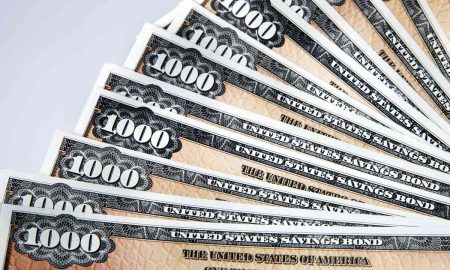
How to Lock In a ‘Good’ APR on Your Personal Loans?

When it comes to borrowing, understanding the intricacies of the Annual Percentage Rate (APR) can feel like deciphering a secret code. The APR on a personal loan not only impacts your monthly payments but also the total amount you will repay over the life of the loan.
Now, let’s go ahead and explore APR and see how you can secure the best rates available:
What Is APR?
Think of APR as the broader measure of your loan’s cost. It covers not just the interest rate but also other fees associated with your loan, such as origination fees, packaged into a neat annualized percentage. This comprehensive figure gives you a clearer picture of the true cost of borrowing.

Mikhail / Pexels / At its core, the Annual Percentage Rate (APR) is the annual percentage you will be paying on your personal loans.
A “favorable” or “good” APR is subjective and deeply intertwined with the borrower’s creditworthiness and the prevailing economic environment. While borrowers aim for the lowest possible APR, what is attainable varies greatly from one borrower to another.
What Influences Your APR?
When lenders evaluate your application, they do not just toss darts at a board to determine your APR. Instead, they examine your:
- Credit Score: This three-digit number is pivotal, acting as a shorthand for your financial reliability. Higher scores often unlock lower APRs.
- Debt-to-Income Ratio (DTI): Lenders look at your DTI to assess how your debt stacks up against your income. A lower DTI can lead to a more attractive APR.
- Loan Terms: The duration of your loan can influence your APR. Generally, shorter loans have lower APRs since lenders take on less risk.
- Collateral: Some loans require collateral. Offering collateral can sometimes reduce your APR because it decreases the lender’s risk.

Bruce / Unsplash / Lenders measure your APR based on your credit score, DTI, and collateral.
However, APR rates fluctuate, influenced by factors like Federal Reserve policies and economic trends. For example, if the Fed hikes rates, borrowing costs can climb. Staying informed about these changes can help you time your loan application for the most advantageous rates.
Identifying a Good APR
A “good” APR is relative, reflecting both individual financial circumstances and the broader economic climate. Historically, personal loan APRs range from 4% to 36%. However, a good APR would ideally fall at or below the lower end of this spectrum for borrowers with strong credit profiles.
The economy plays a significant role in determining loan APRs. For instance, an uptick in the Federal Reserve’s benchmark rates can lead to higher personal loan APRs. Understanding these dynamics can provide crucial context when evaluating loan offers.
How to Achieve Your Best Possible APR?

Karolina / Pexels / An APR below 10% is generally considered a ‘good’ APR on personal loans.
Securing the best APR for your situation is a multifaceted endeavor. Here is how you can secure the best rate:
- Credit Enhancement: Improving your credit score can lead to lower APRs. This might mean paying down existing debt or ensuring your bills are paid on time.
- Comparative Shopping: Do not settle for the first offer. Compare rates from multiple lenders to find the best deal.
- Loan Term Consideration: Opting for a shorter loan term can result in a lower APR, though this might mean higher monthly payments.
However, do not be afraid to negotiate with lenders. If you have a strong financial standing or existing relationship with a financial institution, you might secure a more favorable rate.
So, in the journey to secure a personal loan, the APR is a crucial marker of your path’s cost. A good APR not only makes your loan more affordable but also reflects your financial health and planning. By understanding the factors that influence APR and actively working to present yourself as a low-risk borrower, you can navigate towards the most advantageous loan terms.
More in Financial Adviser
-
Brewing Controversy: Unraveling the Bud Light Boycott
In a world fueled by opinions, the recent Bud Light boycott has stirred quite the commotion. It’s not your typical tale...
December 7, 2023 -
How LVMH Became a $500 Billion Luxury Empire
LVMH Moët Hennessy Louis Vuitton is a name synonymous with luxury and opulence. The brand has crafted not just products but...
December 2, 2023 -
Women Spend 20% More Per Year on Out-of-Pocket Health Costs
A recent report from Deloitte has brought to light a concerning issue in the world of healthcare – women spend a...
November 24, 2023 -
How Sound Baths Can Soothe Your Mind, Body and Soul
Have you ever been so caught up in a song that you felt the world melt away? Music, in its many...
November 18, 2023 -
What to Know Before Rebalancing Your Investment Portfolio
Managing an investment portfolio is akin to steering a ship through ever-changing waters. Periodic adjustments are necessary to ensure you stay...
November 11, 2023 -
Jeff Bezos and Fiancée Lauren Sánchez’s Extravagant $500 Million Superyacht
Get ready to set sail on a journey into the opulent world of Amazon founder Jeff Bezos and his fiancée Lauren...
October 31, 2023 -
How to File Your Taxes: A Comprehensive Guide
Filing your taxes can be daunting, but with the right knowledge and preparation, it doesn’t have to be overwhelming. Taxes are...
October 26, 2023 -
Make Your Kids Mini Master Chefs | Here’s How
For many of us, the kitchen is the heart of our homes – a place where magic happens, one dish at...
October 19, 2023 -
Deciphering Stock Market Sell Signals
In the fast-paced world of stock trading, understanding when to sell your investments is just as crucial as knowing when to...
October 12, 2023















You must be logged in to post a comment Login